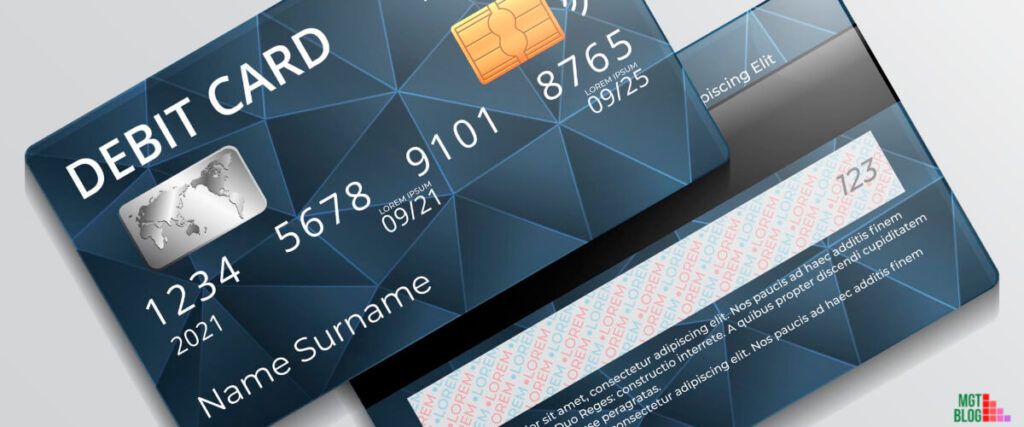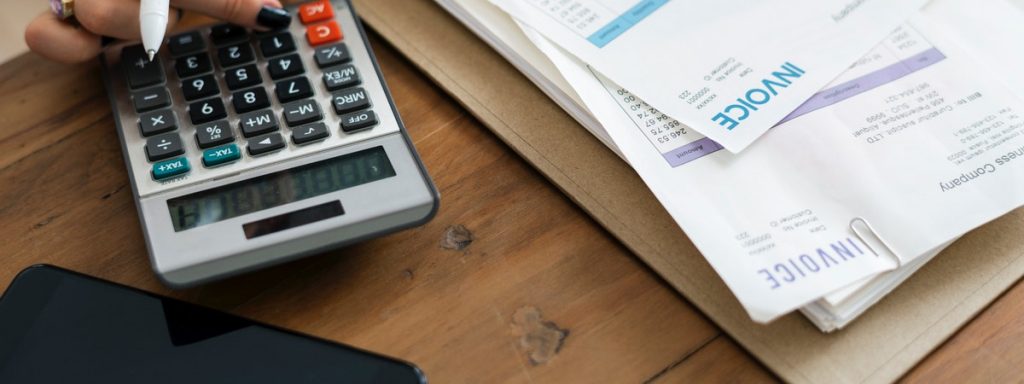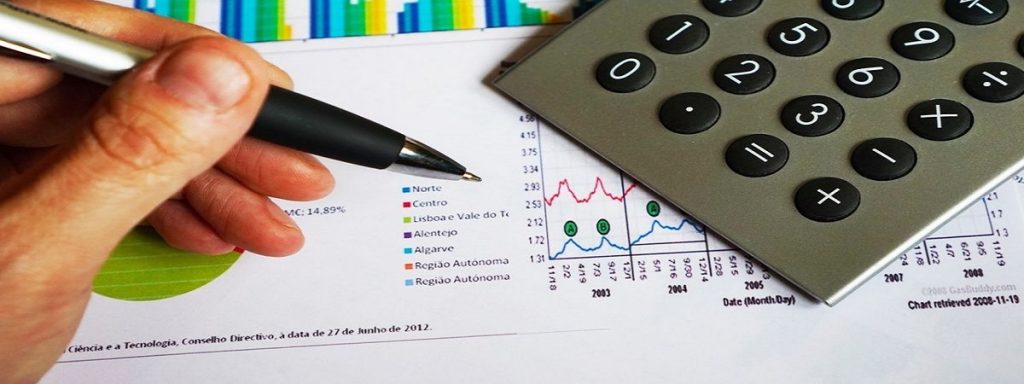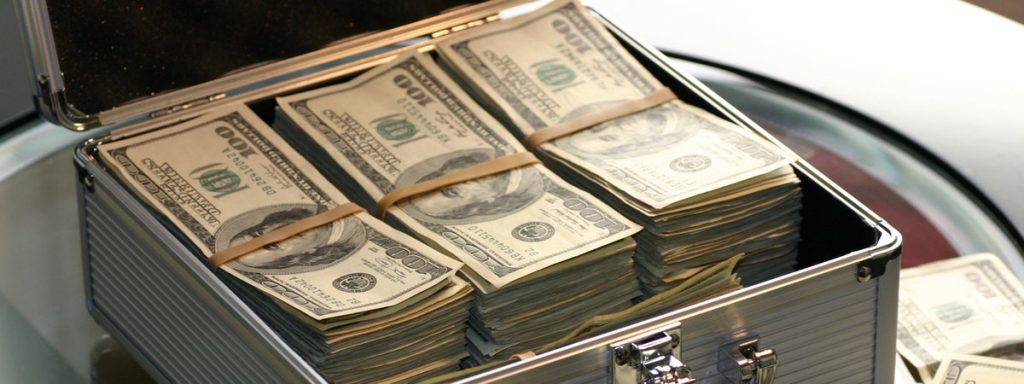A debit card is a hugely used payment method that people use to make online and in-store payments. The name on the debit card refers to the person who owns the account associated with the debit card. Usually, the name is printed on the front of the card. Each debit card has a unique number printed on the front of the card and it is known as the debit card number. Usually, a debit card number is a 16-digit number and is different from the account number.
What Is A Debit Card?
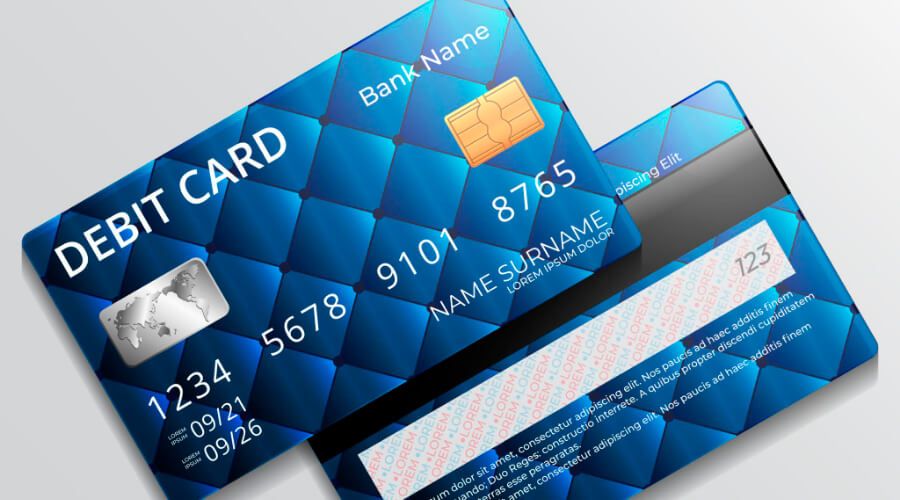
A debit card is a type of payment method that allows the customers to make payments where the payment amount is directly deducted from the account on a single tap. In terms of use, a debit card is quite similar to a credit card. It means you can use the debit card in the same manner as the credit card to make payments. Here the main difference is, when you use a debit card, you are using your own money, unlike borrowed funds in Credit Cards. The use of debit cards eliminates the need for carrying physical cash.
How Do Debit Cards Work?
If you use a debit card to make offline payments then you have to use a card machine. Making payments with a debit card is very swift and convenient. Here, the merchant inputs the amount, and then you have to input your unique PIN to complete the transaction. Once the transaction is completed, you will receive a notification of your completed payment. When the merchant request the payment, the bank process the request and releases the required amount from the bank account of the cardholder.
On the other hand, when you use your Debit Card online you have to enter the 16-digit Debit Card Number, the expiry date, and the three-digit CVV number to initiate the transaction. When you provide all the correct information, an OTP is triggered to your registered mobile number that you have to enter at the merchant’s site to complete the transaction.
Different Parts Of A Debit Card
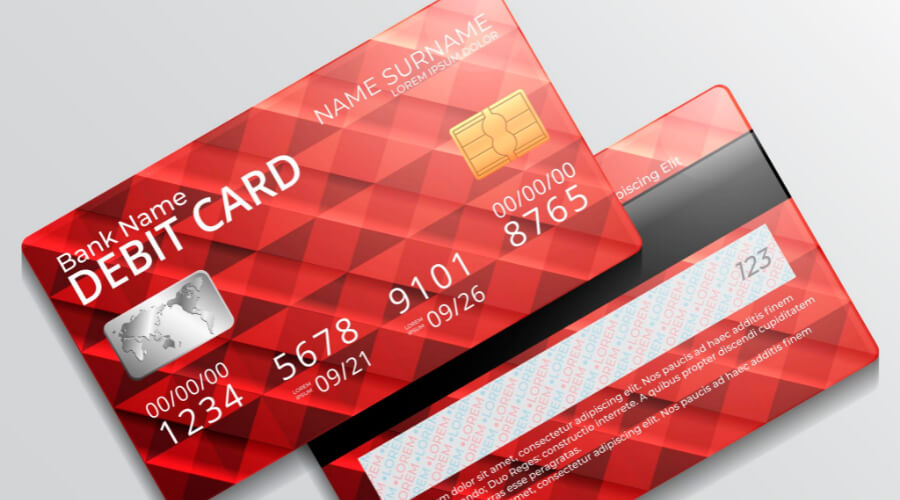
Each debit card has two sides: front and back. Both sides of a debit card contain some very important information that is required to complete a transaction. Therefore, all debit card users need to understand each part of the card so that they can efficiently use your card.
Front Of A Debit Card
The front part of a debit card has six sections. They are –
1. Bank branding
2. Card number
3. Cardholder’s name
4. Smart chips
5. Expiration date
6. Payment network logo
1. Bank Branding
This section of the card identifies the card-issuing bank. Here you might see the Bank’s name or the company logo. For example, some cards are branded with rewards programs or retailer names.
2. Card Number
This is very important information about your debit card. A card number is a 16-digit number and it identifies your account with the card issuer. While you are making an online purchase you have to provide the card number. You should keep your card number private because it is very confidential financial information.
3. Cardholder’s Name
The next section of your debit card is “cardholder’s name” and this is the person who is authorized to use the card. Only the authorized cardholder can use the debit card to make purchases. Therefore, merchants ask for an ID before accepting payment with a debit card.
4. Smart Chips
If you closely look at the front part of your debit card then you will see a tiny metal processor on the right front side of the debit card. It is known as a smart chip and makes cards more secure than traditional magnetic-stripe-only cards. Smart chips make it very harder for thieves to use stolen credit card numbers. If your card has a smart chip then try to use the car inserting into the machine instead of swiping. This is because the smart chip adds a single-use code to every transaction, which makes stolen data less useful.
5. Expiration Date
Each debit card has an expiration date and when the card becomes expires you have to renew the card or order a new card. The expiration date is very important because when you are trying to make a payment the vendor might require it, especially for online payments. The expiration date ensures that your card is valid and active.
6. Payment Network Logo
This section contains information that indicates the type of card you have. Some common examples are MasterCard, Visa, and Discover. When you pay online, you have to select what type of card you are using. These logos also are helpful when you plan to use your card to pay for goods or services.
Back Of A Debit Card
1. Magnetic stripe
2. Hologram
3. Bank contact information
4. Signature panel
5. Security codes/CVV
6. Network logos
1. Magnetic Stripe
The back part of the card has a black magnetic stripe that contains information about you and your card. When you swipe your card at a merchant, you run the magnetic stripe through a card reader to provide your payment details. This Magnetic stripe contains information that includes your name, card number, expiration date, and other details. This information is very important because if someone can steal this information then they can use it to create a fake card with a magnetic stripe that matches your card and steal your money.
2. Hologram
Some cards display a hologram, or a mirror-like area showing a three-dimensional image for added security. It helps the merchants identify whether the card is valid or not. Holograms are difficult to fake, and technology is constantly improving. Sometimes the hologram appears on the front of the card.
3. Bank Contact Information
The backside of a debit card also contains the contact information of the bank. If you need to contact the bank then you can check your debit card’s back to find the contact information. Moreover, if you lost your card then the person who found the card can use this contact information to return the card to the bank.
4. Signature Panel
You have to sign your debit card before you can use it. On the backside of your card, there is a signature panel where you have to sign to make your card valid. Usually, it is a small box and sometimes it is very difficult to fit the signature onto the box, but do your best.
5. Security Codes/CVV
Every debit card is printed with an additional code to help ensure that the card is a legitimate, original card. When you want to make online payments you have to provide the right CVV code or you won’t be able to make the payment. The CVV creates an additional hurdle for hackers who may have stolen your card number from merchant systems. The security code is referred to as CVV, CVV2, CVC, CSC, CID, or other similar names.
6. Network Logos
There might be an additional network logo on the back of the debit card. Usually, the logo is in the lower-right corner. These logos help you figure out which ATMs you can use for free. You can also use other ATMs but you may have to pay additional fees!
FAQs About Debit Card Name And Number: Get To Know The Parts Of A Debit Card
Will My Debit Card Be Canceled If It’s Not Activated On Time?
No, your debit card won’t be canceled if it is not activated on time. However, you won’t be able to use the debit card if it is not activated and you might also have to pay the monthly fees for the card.
Is CVV The Same As The Card’s PIN?
The Personal Identification Number (PIN) is not the same as the CVV. Usually, the PIN is used for making in-person transactions with the card at the ATMs. On the other hand, the CVV is used when making online purchases.
Does Every Debit Card Have CVV?
Yes, every debit card has CVV. The CVV number is used for online purchases. Usually, VISA, MasterCard, and Discover cards have three-digit CVV.
Do Debit Cards Have Names?
Yes, debit cards have names and it indicates the name of the account holder with which the debit card is linked. Moreover, the person whose name is printed on the debit card is the only authorized person to use the card.
References:
1. https://www.thebalance.com/parts-of-a-debit-or-credit-card-front-and-back-315489
2. https://www.point.app/article/a-guide-to-understanding-the-numbers-on-credit-debit-cards
Last Updated on February 16, 2022 by

Magalie D. is a Diploma holder in Public Administration & Management from McGill University of Canada. She shares management tips here in MGTBlog when she has nothing to do and gets some free time after working in a multinational company at Toronto.

